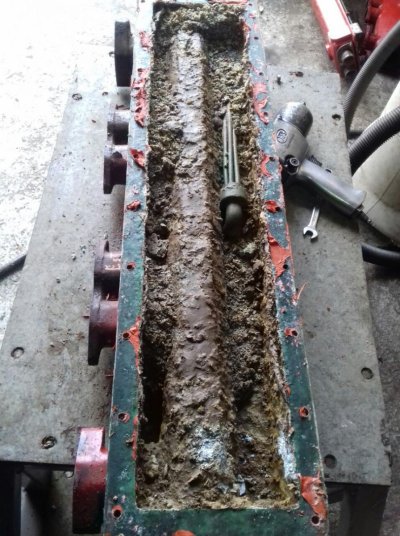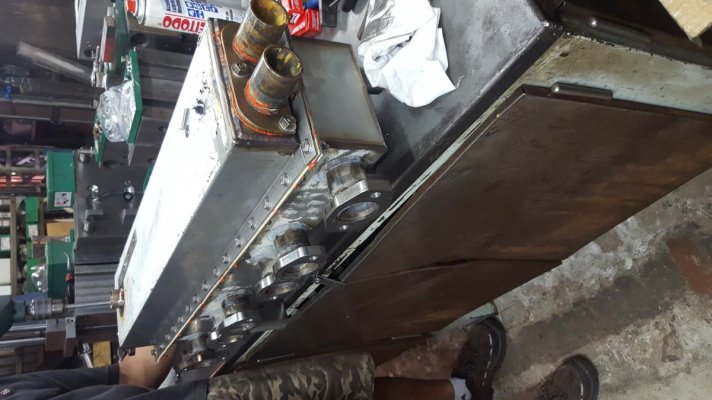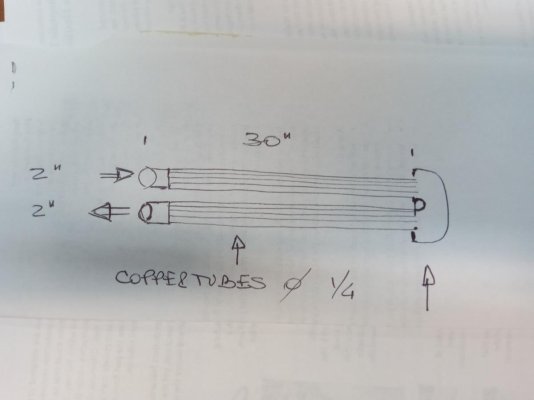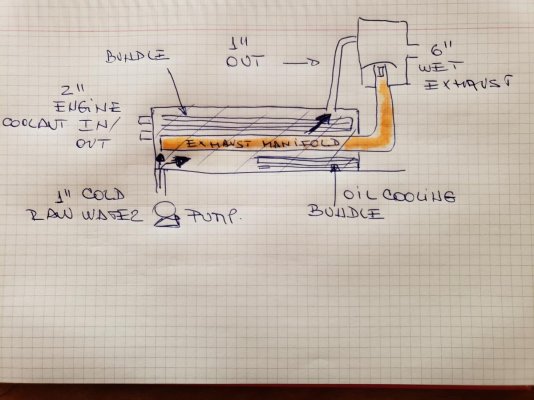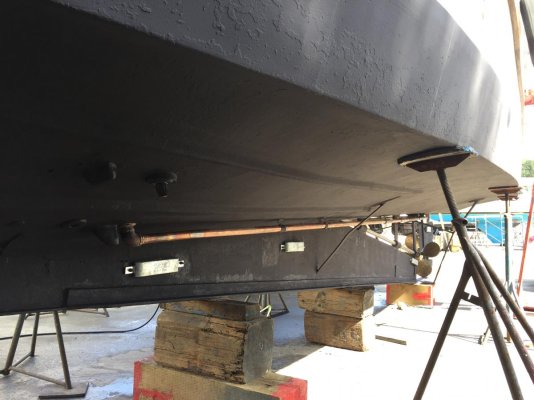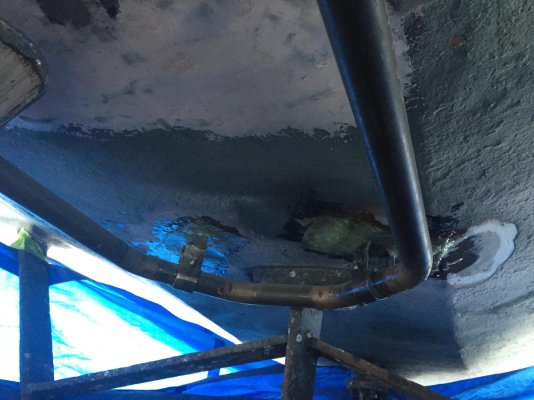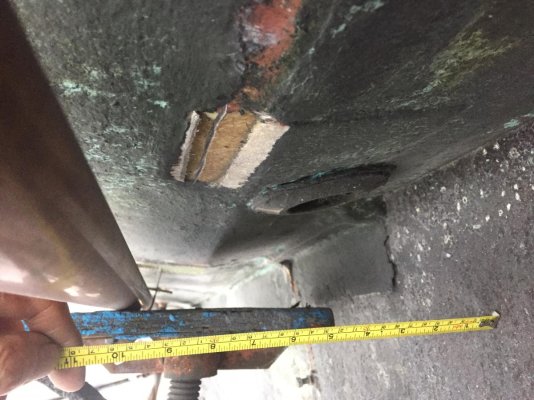Wow, those pictures indicate that you are quite skilled at mechanical fabrication. But my initial reaction after seeing the pics is that the raw water system is too small and you don't have enough tube area in that heat exchanger bundle or stack as it is sometimes called. I am referring to the last pic for the bundle size as well as the first pic which shows smallish raw water piping/hose.
Are you seeing steam in your exhaust as it exits the boat as it starts to overheat? My guess at this point is that the temp of the raw water as it goes into that water injection stack is too high as a result of low flow and lack of tube area. Should be no more than 20 deg F higher than sea water inlet temps.
Your data collection will tell the story.
David
Are you seeing steam in your exhaust as it exits the boat as it starts to overheat? My guess at this point is that the temp of the raw water as it goes into that water injection stack is too high as a result of low flow and lack of tube area. Should be no more than 20 deg F higher than sea water inlet temps.
Your data collection will tell the story.
David
Last edited:

